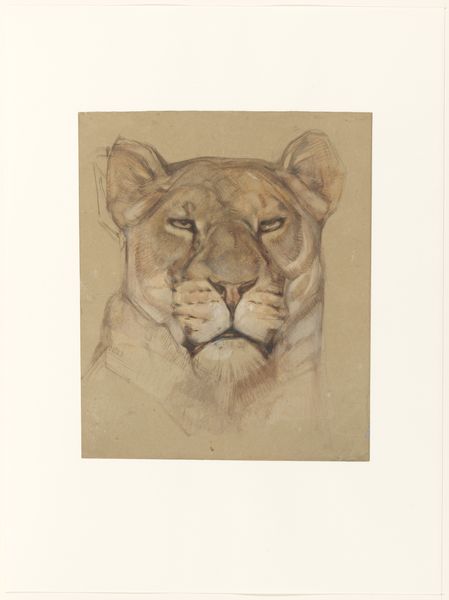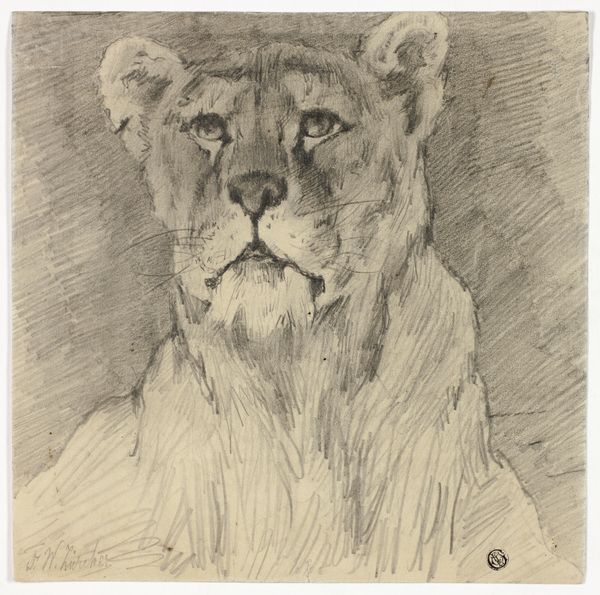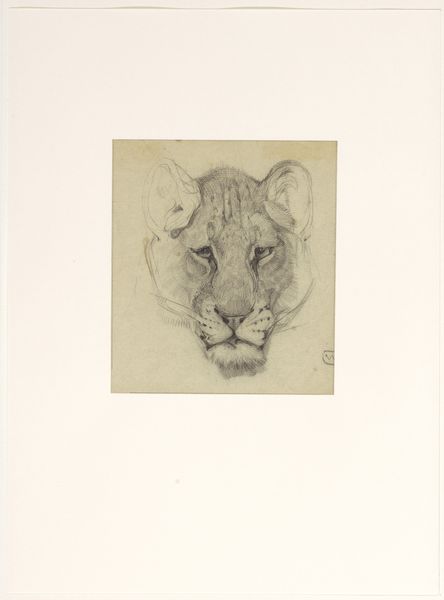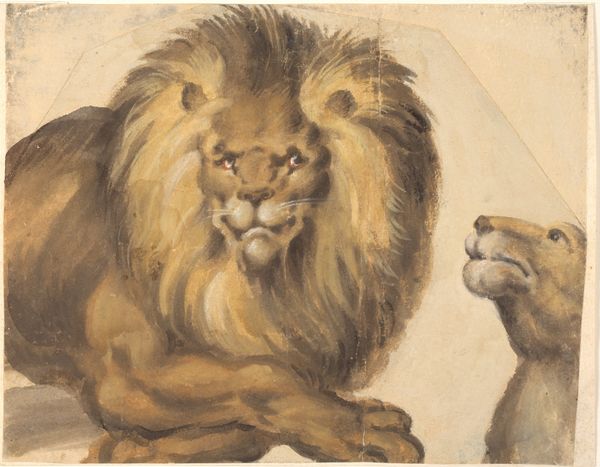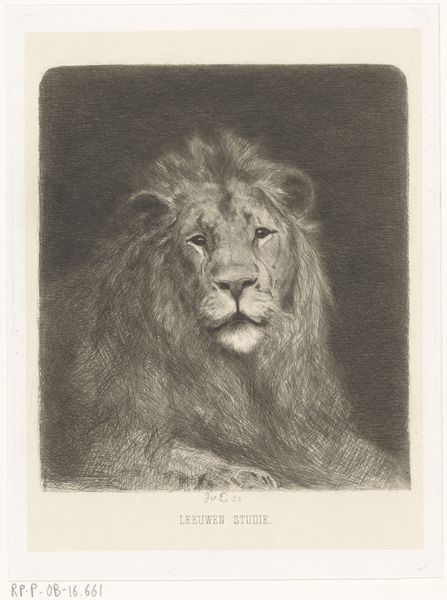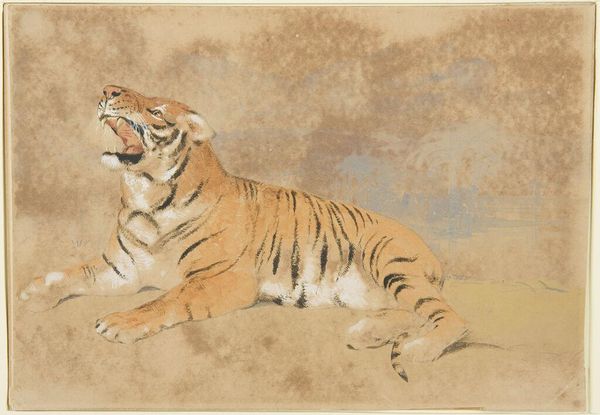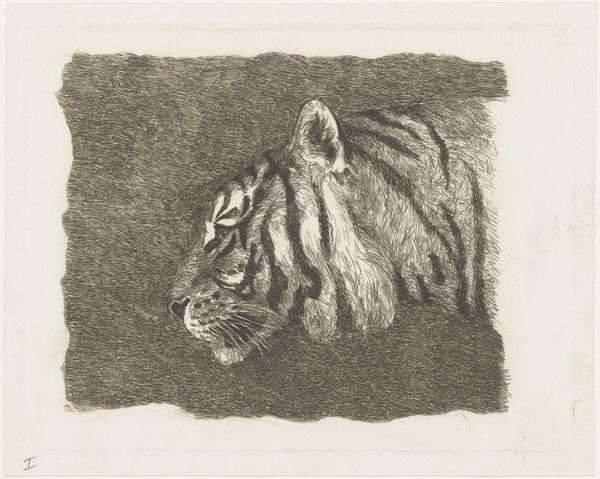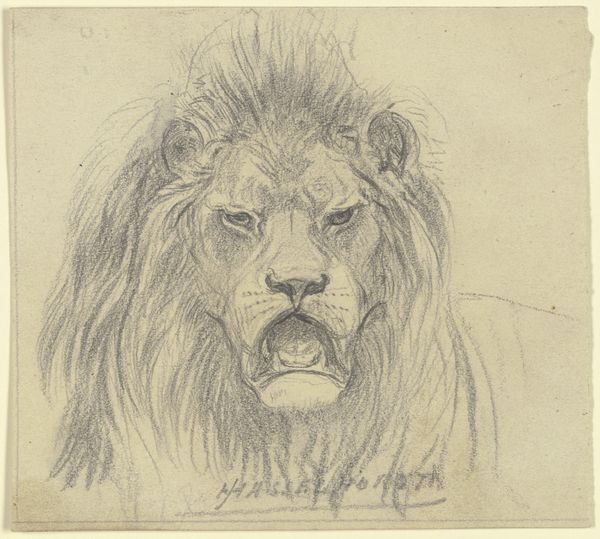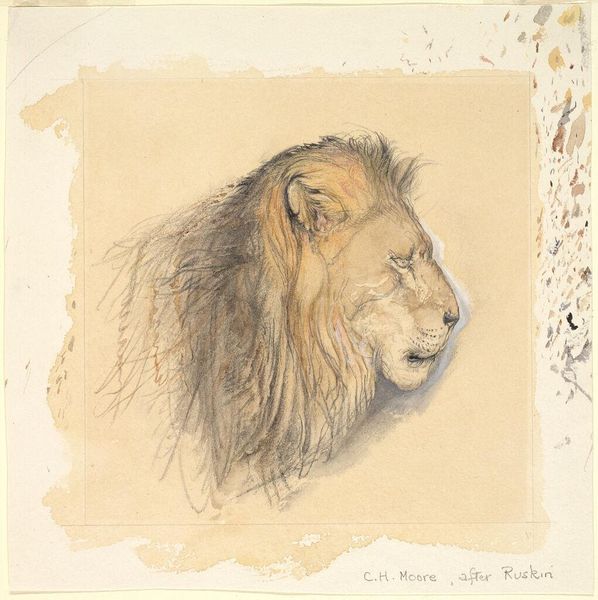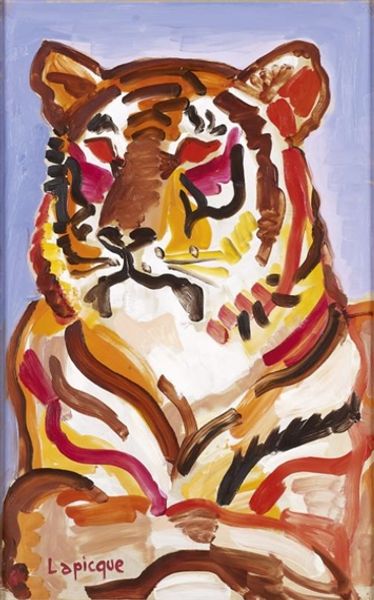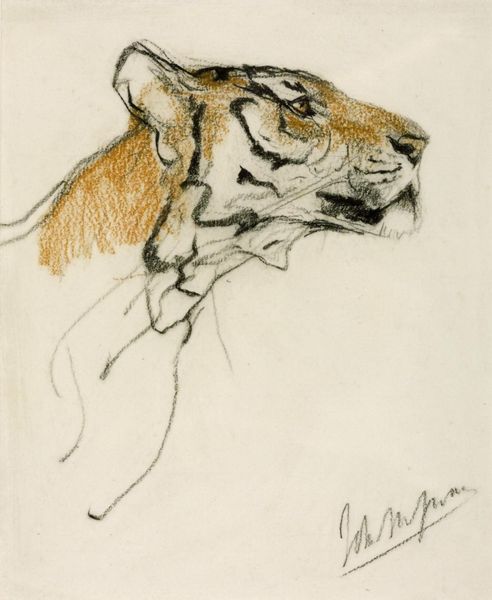
painting, watercolor
#
portrait
#
painting
#
oil painting
#
watercolor
#
animal portrait
#
watercolour illustration
#
portrait art
#
watercolor
Dimensions: height 315 mm, width 263 mm
Copyright: Rijks Museum: Open Domain
Editor: Here we have "Head of a Lioness" by Bernard Willem Wierink, probably from sometime between 1866 and 1939, using watercolour and oil paint. What strikes me most is how gentle the lioness appears, almost serene. What do you make of it? Art Historian: It’s interesting how the artist chose to depict the lioness, isn’t it? Given its place within our cultural imagination, as symbol for dominance, ferocity, even royalty, this treatment is quite striking. Consider the institutional context: the Rijksmuseum itself. What narratives of Dutch identity, of power, might this seemingly docile lioness support? Editor: So, you're saying it's not just about the lioness herself, but what she represents to Dutch society at the time? Art Historian: Precisely! Think about how wild animals were often portrayed in art and popular culture, often reflecting colonial power over nature, particularly during that period. This watercolor softens those ideas somewhat. Editor: It’s almost like they're trying to domesticate the wild. But watercolor, as a medium, wasn't really considered important as art at the time, right? How does that play in? Art Historian: That's a key point. Watercolour was frequently associated with studies, sketches or “feminine” art forms. By choosing this medium, is Wierink commenting on ideas of power? Or is he merely following conventions? I would be curious to see how it was received when first displayed to answer that question more fully. Editor: I never considered the politics of the medium itself. Art Historian: These choices always matter. Looking closer I notice the somewhat ambiguous signature “VRW”. Does that alter my reading do you think? Considering what the artist might wish to signal to an art-educated elite is also significant here. Editor: Definitely given what you said before! I hadn’t even noticed the signature. Thanks, I see it differently now. Art Historian: Indeed, examining it through a historical lens certainly adds layers of meaning! It's made me think more about the politics embedded in seemingly straightforward portraits of animals.
Comments
No comments
Be the first to comment and join the conversation on the ultimate creative platform.
